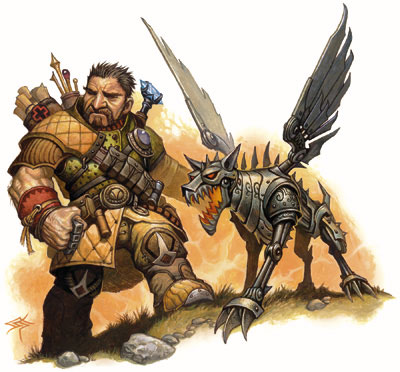Hey there space cadets! Today I bring you my Pathfinder version of Stencheye, the big bad evil leader of the troll den in Heron Prior’s Trolls Will Be Trolls one-page dungeon. You may remember my 4e conversion (part 1, 2, 3, 4); I’m still working on it, but I’m a bit burned out on 4e at the moment and I thought this would be more fun.
Enjoy!
Stencheye, the Troll Witch CR 10
XP 3200
Neutral Evil Large humanoid (giant)
Init +3; Senses darkvision 120 ft., low-light vision, scent; Perception +29*; see invisible/ethereal; see all directions
DEFENSE
AC 17, touch 12, flat-footed 17 (+3 Dex, +5 natural, -1 size)
hp 120 (6d8 plus 6d6+72) regeneration 5 (acid or fire)
Fort +13, Ref +7, Will +9;
Resistances Fire 10
OFFENSE
Speed 30 ft., fly 60 (good; via hex)
Melee bite +10 (1d8+4), 2 claws +10 (1d6+4)
Space 10 ft. Reach 10 ft.
Special Attacks rend (2 claws, 1d6+4), hexes, spells
Spells Prepared (CL 6, DC 12+spell level, 13+spell level necromancy)
3rd: Bestow Curse, Eruptive Pustules
2nd: Blindness/Deafness, False Life, Web, Vomit Swarm
1st: Chill Touch, Mage Armor, Ray of Enfeeblement, Ray of Sickening
0: Bleed, Detect Magic, Message, Touch of Fatigue
STATISTICS
Str 18, Dex 16, Con 22, Int 14, Wis 11, Cha 10
Base Atk +7; CMB +13; CMD 26
Feats Intimidating Prowess, Iron Will, Skill Focus (Perception), Combat Casting, Ability Focus: Misfortune Hex, Spell Focus: Necromancy
Skills Bluff +3, Intimidate +19, Knowledge: arcane +17, Linguistics +4, Perception +29*, Spellcraft +17
*+4 from Alertness if familiar is in arms reach
*+10 competence bonus from robe of eyes
Languages Common, Dwarven, Giant, Infernal, Abyssal
ECOLOGY
Environment cold mountains
Organization solitary
Treasure robe of eyes, amulet of fire resistance
SPECIAL ABILITIES
Cackle Hex (Su): A witch can cackle madly as a move action. Any creature that is within 30 feet that is under the effects of an agony hex, charm hex, evil eye hex, fortune hex, or misfortune hex caused by the witch has the duration of that hex extended by 1 round.
Flight Hex (Su): The witch grows lighter as she gains power, eventually gaining the ability to fly. At 1st level, the witch can use feather fall at will and gains a +4 racial bonus on Swim checks. At 3rd level, she can cast levitate once per day. At 5th level, she can fly, as per the spell, for a number of minutes per day equal to her level. These minutes do not need to be consecutive, but they must be spent in 1-minute increments. This hex only affects the witch.
Misfortune Hex (Su): The witch can cause a creature within 30 feet to suffer grave misfortune for 1 round. Anytime the creature makes an ability check, attack roll, saving throw, or skill check, it must roll twice and take the worse result. A Will save negates this hex. At 8th level and 16th level, the duration of this hex is extended by 1 round. This hex affects all rolls the target must make while it lasts. Whether or not the save is successful, a creature cannot be the target of this hex again for 1 day.
Patron: Plague (Ex): provides the following spells: Detect Undead, Command Undead, Contagion.
Amulet of Fire Resistance: Constantly provides the wearer Fire Resistance 10. (12,000 GP)
Robe of Eyes: This valuable garment appears to be a normal robe until it is put on. Its wearer is able to see in all directions at the same moment due to scores of visible, magical eye-like patterns that adorn the robe. She also gains 120-foot darkvision.
The robe of eyes sees all forms of invisible or ethereal creatures or objects within 120 feet.
The wearer of a robe of eyes gains a +10 competence bonus on Perception checks. She retains her Dexterity bonus to AC even when flat-footed, and can’t be flanked. She is not able to avert or close her eyes when confronted by a creature with a gaze attack.
A light or continual flame spell cast directly on a robe of eyes causes it to be blinded for 1d3 minutes. A daylight spell blinds it for 2d4 minutes. (120,000 GP)
Viper Familiar CR 1/2
XP 200
N Tiny animal (augmented)
Init +3; Senses low-light vision, scent; Perception +18
DEFENSE
AC 19, touch 15, flat-footed 16 (+3 Dex, +4 natural, +2 size)
hp 60 (12)
Fort +6, Ref +7, Will +8;
OFFENSE
Speed 20 ft., climb 20 ft., swim 20 ft.
Melee bite +7 (1d2-2 plus poison)
Space 2-1/2 ft.Reach 0 ft.
STATISTICS
Str 4, Dex 17, Con 8, Int 8, Wis 13, Cha 2;
Base Atk +3; CMB +4; CMD 11 (can’t be tripped)
Feats Weapon Finesse
Skills Climb +11, Intimidate +8, Knowledge: arcane +11, Linguistics +1,
Perception +18, Stealth +15, Spellcraft +11, Swim +11;
Racial Modifiers +4 Perception, +4 Stealth
Familiar Abilities Alertness, empathic link, improved evasion, share spells, store spells, deliver touch spells, speak with master
ECOLOGY
Environment any temperate and warm
Organization solitary
Treasure none
SPECIAL ABILITIES
Poison (Ex) Bite-injury; save Fort DC 15; frequency 1/round for 6 rounds; effect 1d2 Con; cure 1 save.
Spells Stored (Su):
3rd: Bestow Curse, Contagion, Dispel Magic, Eruptive Pustules
2nd: Blindness/Deafness, Command Undead, False Life, Web, Vomit Swarm
1st: Burning Hands, Chill Touch, Detect Undead, Mage Armor, Ray of Enfeeblement, Ray of Sickening, Unseen Servant
0: All




